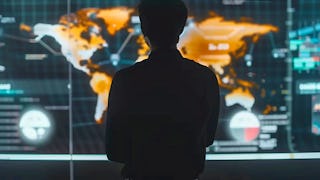Welcome to the Development Economics course! By the end of this course, you will understand the evolution of development economics as a disciplinary stream in the field of economics. The subject rose to prominence in the 1950s as an important field of engagement for economists, policymakers, and development practitioners seeking rapid socio-economic transformation of the backward and newly independent nations, even as a large part of the developed world was caught up with the reconstruction of their broken economies in the post–World War II context. In this course, you will be introduced to the salient features of different development paradigms and how that thinking influenced policymaking in the developing and developed world. Where feasible, the theoretical discussion is approached through contextualized treatment of concepts in view of changes in the developing world and the global economy. You will also be able to learn the concepts intuitively with the help of diagrams without much reliance on statistical or mathematical techniques.

Heat up your career with 40% off top courses from Google, Adobe, and more. Save today.


Recommended experience
What you'll learn
Define development economics and explain how political-economy debates in the real world have influenced development ideas, policies, and practice.
Explain the notion of human well-being, its evolution, and implications for development policy and practice.
Explain the structural context of underdevelopment, poverty, and inequality.
Define the relationship between growth and development and trade and development and the role of globalization in contemporary development.
Skills you'll gain
Details to know
25 assignments
See how employees at top companies are mastering in-demand skills

There are 8 modules in this course
In this module, you will be introduced to the concept of economic development, how the concept has evolved over time, and how it is related to the concept of human well-being. More specifically, you will explore the concepts of GDP as a measure of development, the multifaceted nature of development, Sen’s capability approach, and the concept and measurement of the human development index. You will also understand the relationship between happiness and development and the evolution of ideas in the field of development economics.
What's included
9 videos7 readings3 assignments
In this module, you will explore some structural features of less developed countries, which are often found to be very different from the structural features of developed countries. These features include demographic characteristics of the population, occupation and production structure, presence of dual economy, rural to urban migration, lower level of living, productivity, low industrialization, structural transformation, social conflict, international trade patterns, etc. The study of these features helps you understand the differences in the structure of underdeveloped and developed countries.
What's included
8 videos3 readings2 assignments1 discussion prompt
In this module, you will understand how the evolution of development thinking has happened in development economics. Beginning with Rostow’s stages of growth theory, you will also explore Harrod–Domar theory of economic growth. You will further discuss Lewis’s theory of economic development based on the concept of dual economy observed in surplus labor in underdeveloped countries. The other theoretical developments during the 1960s and 1970s, such as international-dependence theories and market-oriented approaches, are also discussed along with policy-oriented approaches, such as import-substitution-industrialization, export-led-industrialization, and Washington consensus.
What's included
11 videos10 readings5 assignments1 discussion prompt
In this module, you will learn about different theories of economic development, such as the role played by history, expectations, complementarity, and multiple equilibria. You will also explore the concept of underdevelopment as coordination failure, the concept of the poverty trap, critical minimum effort, and the Big Push to get out of the problems of coordination failure and the poverty trap. We also discuss the policy-oriented concepts of linkages and balanced and unbalanced growth. Finally, you will learn how to identify the most pressing constraints a country is facing to increase investment and economic growth.
What's included
9 videos4 readings2 assignments1 discussion prompt
In this module, you will learn about different theories of economic growth. This discussion is divided into proximate determinants of economic growth and deep determinants of economic growth. In the proximate determinants, you will be introduced to the difference and similarities between the neoclassical and endogenous growth models, the convergence hypothesis, and the relationship between club convergence and growth policy. Further, you will explore the deep determinants of economic growth. You will also gain an understanding of economic growth in the very long run. Specifically, you will examine Jared Diamond’s thesis on how geographic factors played a significant role in determining the prosperity of nations in the very long run. Later you will understand the relationship between geography and economic development, first through trade and then through disease and agricultural productivity. You will also gain an insight into the comparative role of geography and institutions in determining the prosperity and poverty of nations in the long run.
What's included
9 videos5 readings3 assignments1 discussion prompt
In this module, you will learn about different concepts related to poverty and inequality. You will be introduced to the extent and magnitude of absolute poverty and the economic characteristics of the high-poverty groups. Further, the measurements of income poverty and multidimensional poverty. You will learn about the measurements of inequality. You will also understand the relationship between aggregate economic growth, poverty, and inequality and the policy options to reduce inequality and poverty.
What's included
10 videos8 readings5 assignments1 discussion prompt
In this module, you will be introduced to different theoretical concepts related to international trade and development. This discussion is divided into international trade theory, trade policy, and multilateral approaches to trade policy. The discussion begins with the theory of comparative advantage and the Heckscher–Ohlin model. Also, the trade policy issues, such as gains from trade, import substitution, and export promotion, are discussed. You will also learn about the reasons for the emergence of restricted trade practices and the issues of trade liberalization.
What's included
8 videos5 readings4 assignments
This module describes the learning objectives, project brief, review criteria, grading criteria, and submission instructions for the Staff Graded Individual Assignment for the course.
What's included
1 video4 readings1 assignment
Earn a career certificate
Add this credential to your LinkedIn profile, resume, or CV. Share it on social media and in your performance review.
Instructor

Offered by
Explore more from Economics

Università di Napoli Federico II

O.P. Jindal Global University
 Status: Free Trial
Status: Free TrialRice University

Erasmus University Rotterdam
Why people choose Coursera for their career





Open new doors with Coursera Plus
Unlimited access to 10,000+ world-class courses, hands-on projects, and job-ready certificate programs - all included in your subscription
Advance your career with an online degree
Earn a degree from world-class universities - 100% online
Join over 3,400 global companies that choose Coursera for Business
Upskill your employees to excel in the digital economy
Frequently asked questions
Access to lectures and assignments depends on your type of enrollment. If you take a course in audit mode, you will be able to see most course materials for free. To access graded assignments and to earn a Certificate, you will need to purchase the Certificate experience, during or after your audit. If you don't see the audit option:
The course may not offer an audit option. You can try a Free Trial instead, or apply for Financial Aid.
The course may offer 'Full Course, No Certificate' instead. This option lets you see all course materials, submit required assessments, and get a final grade. This also means that you will not be able to purchase a Certificate experience.

